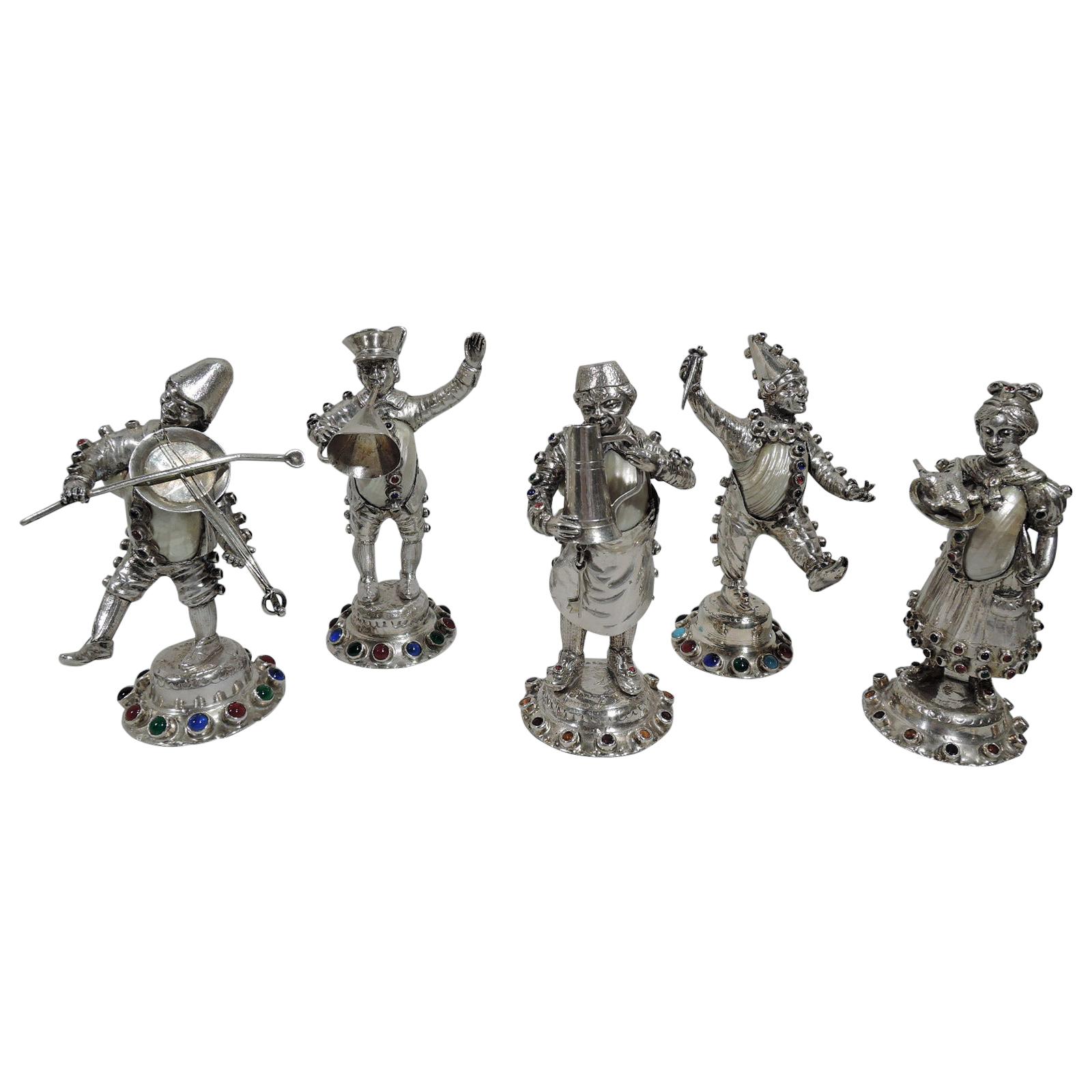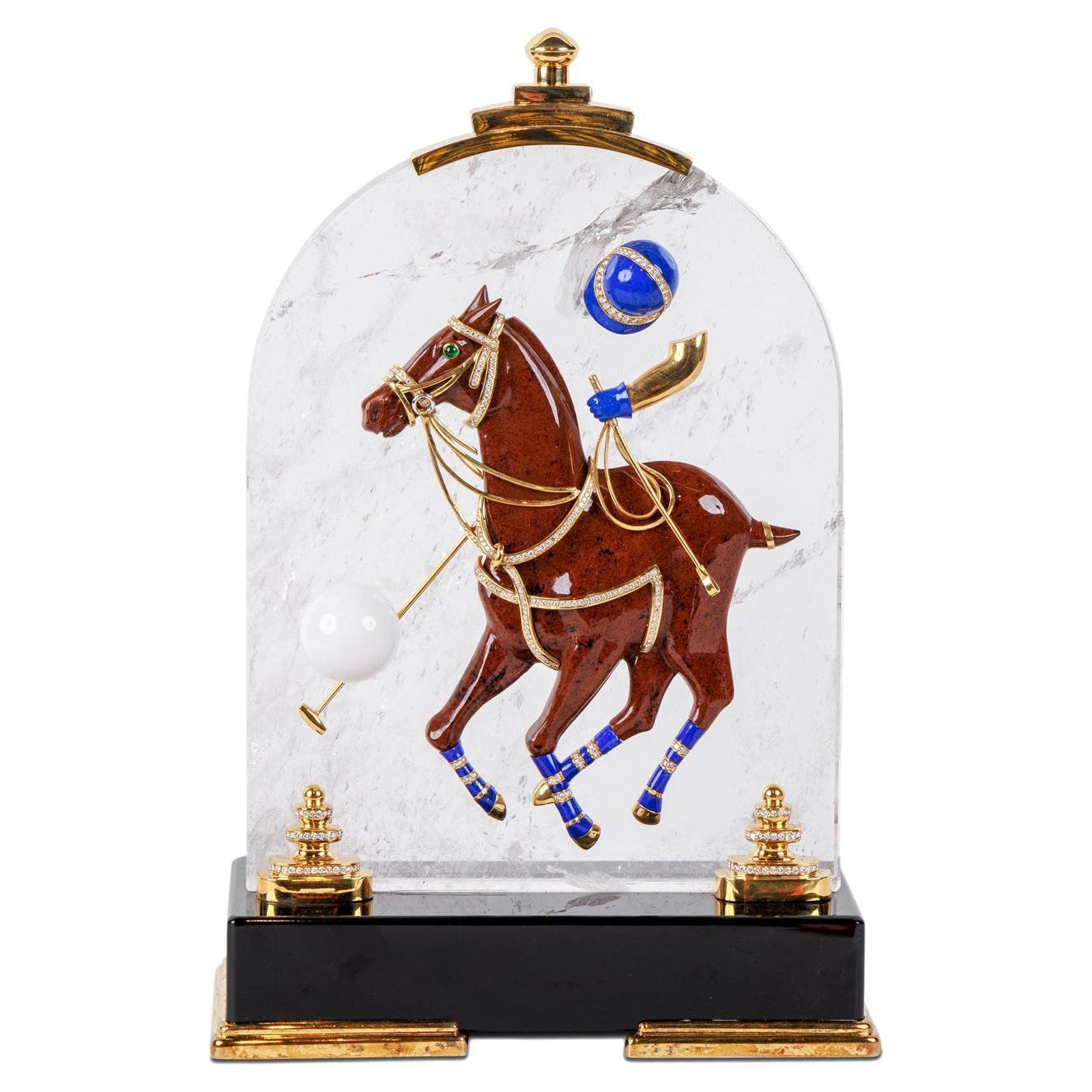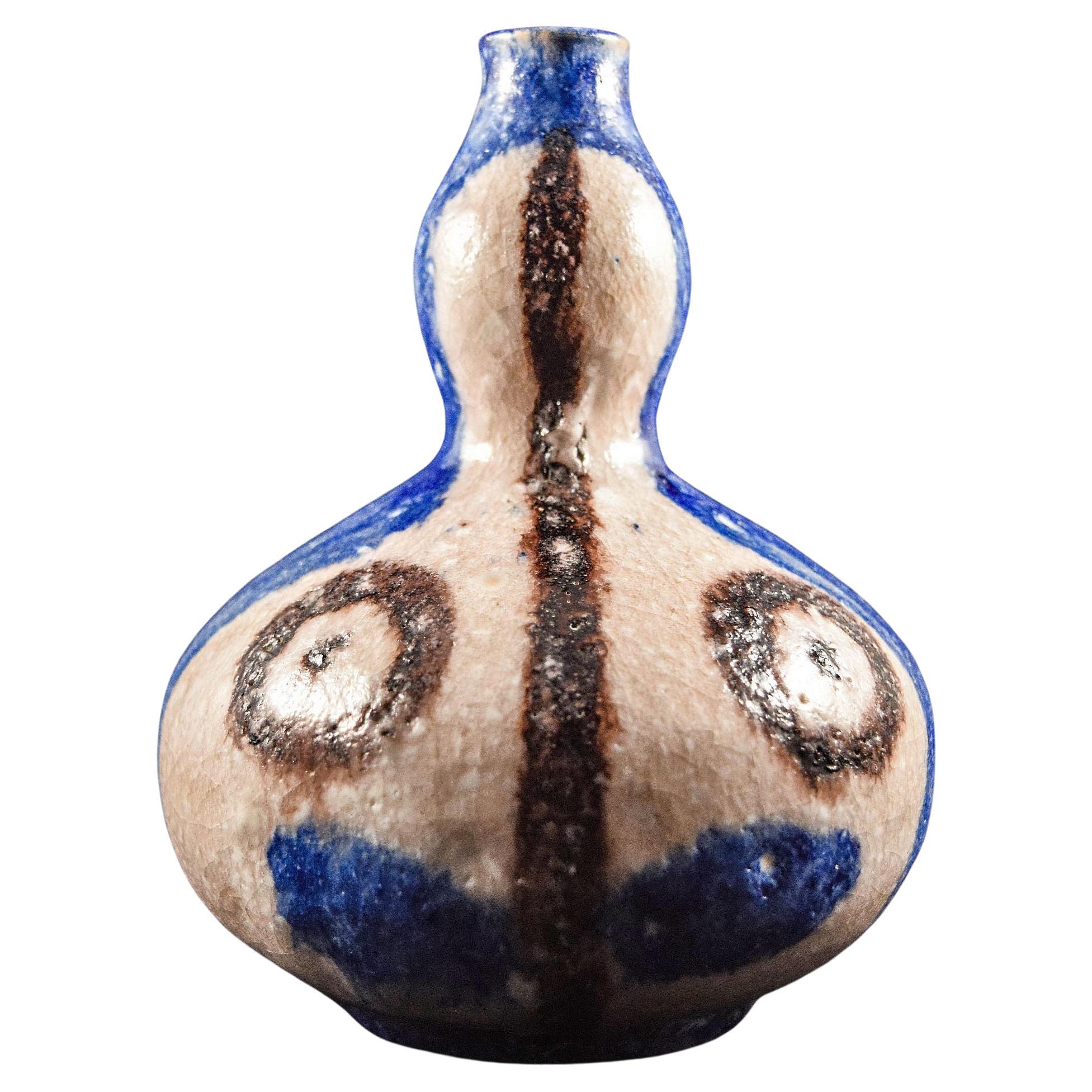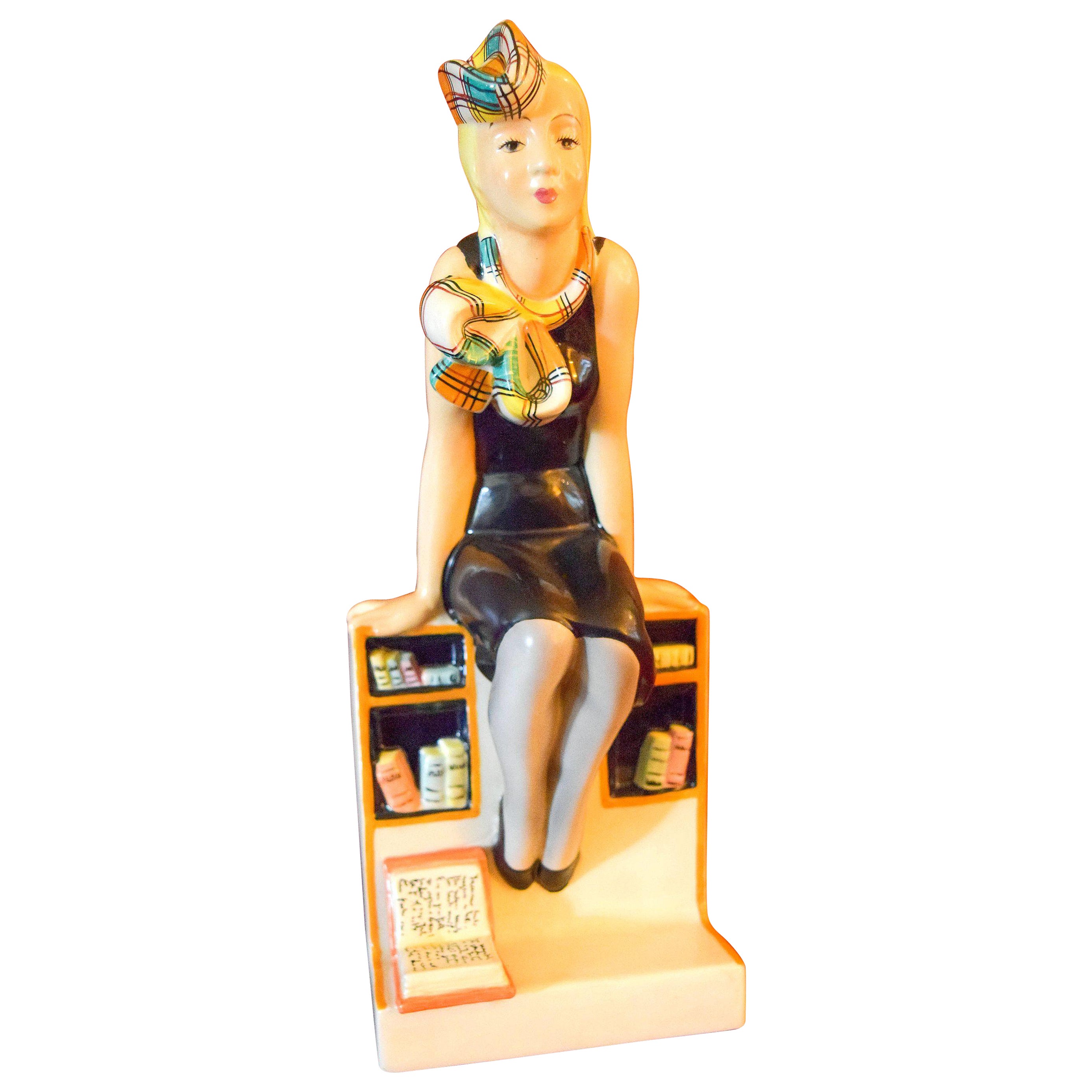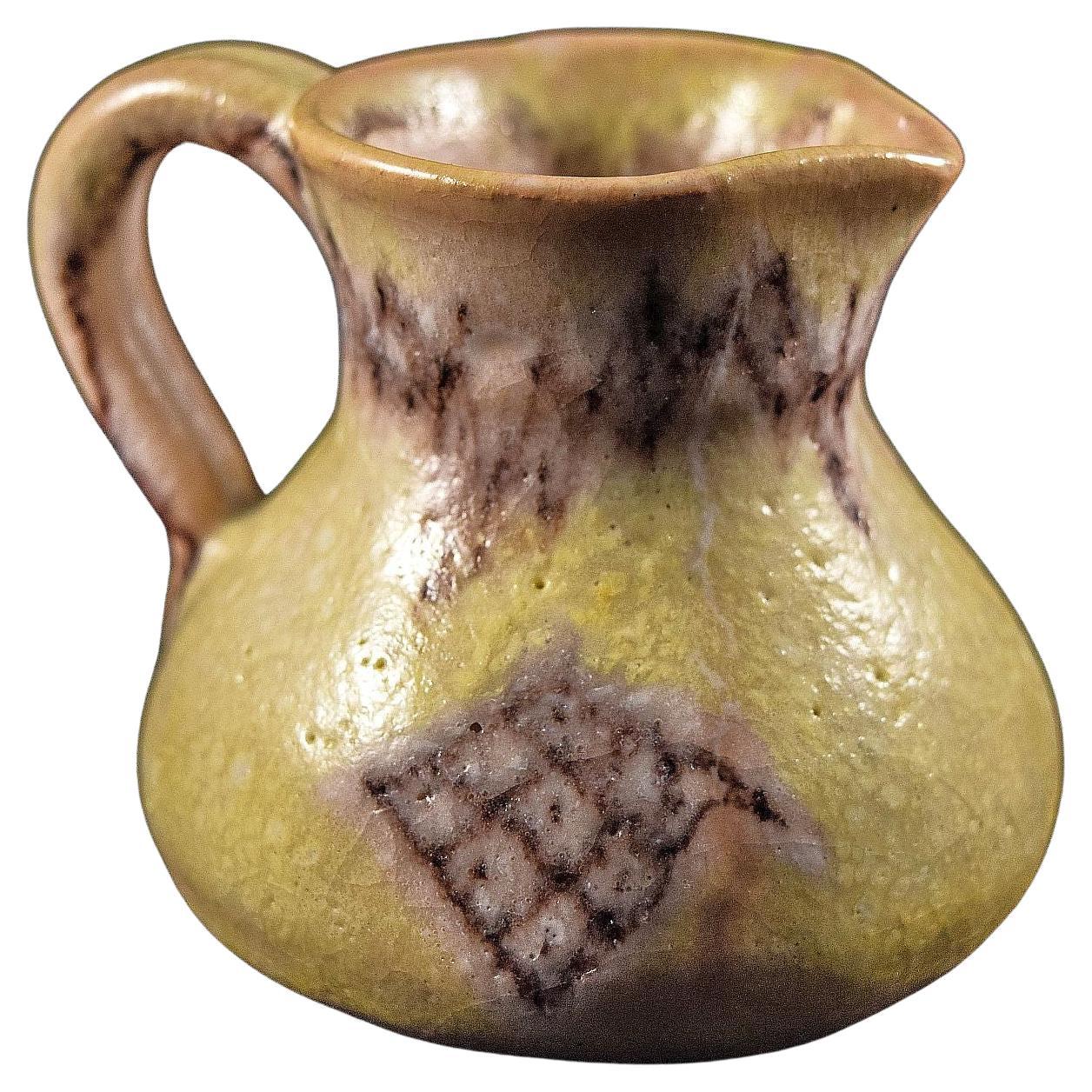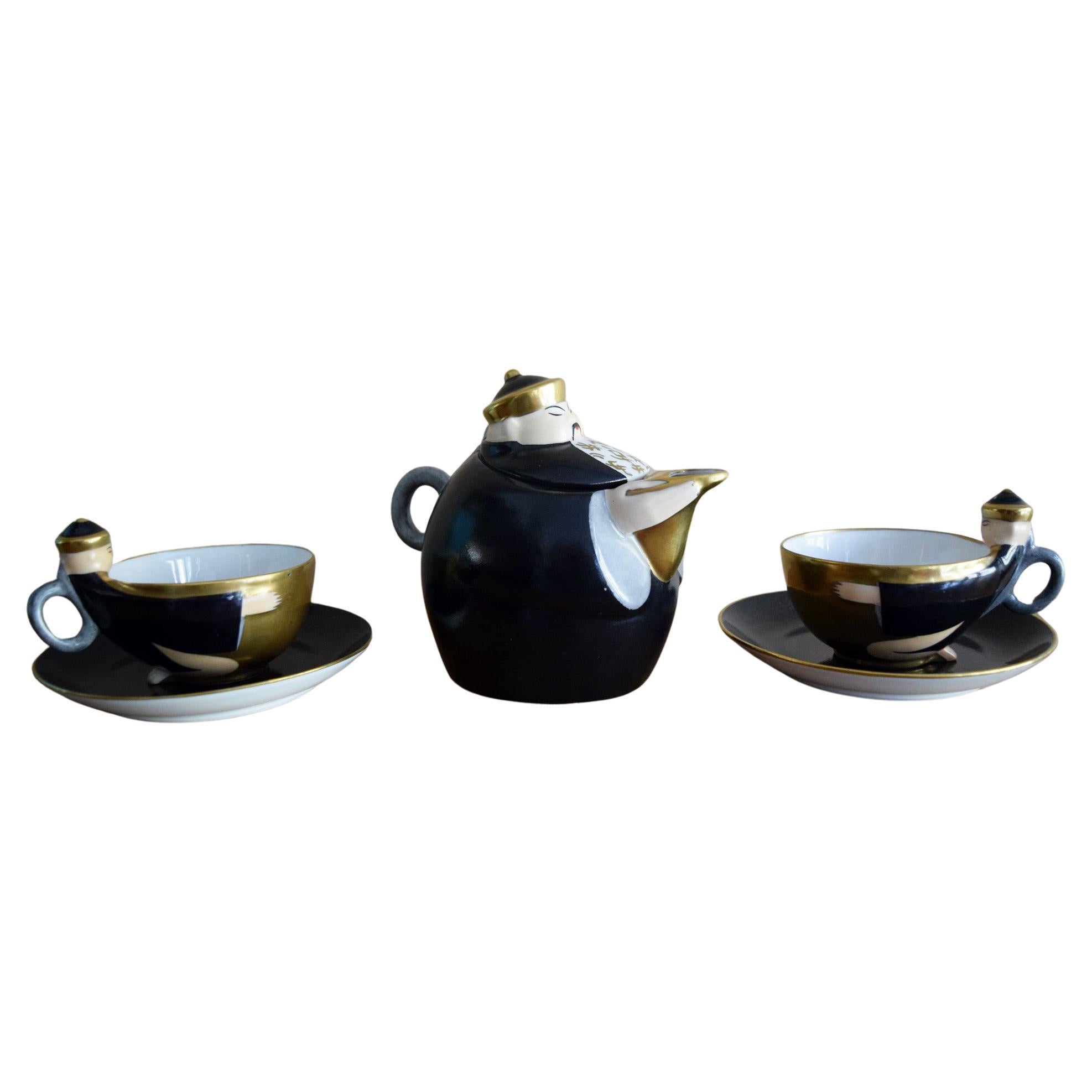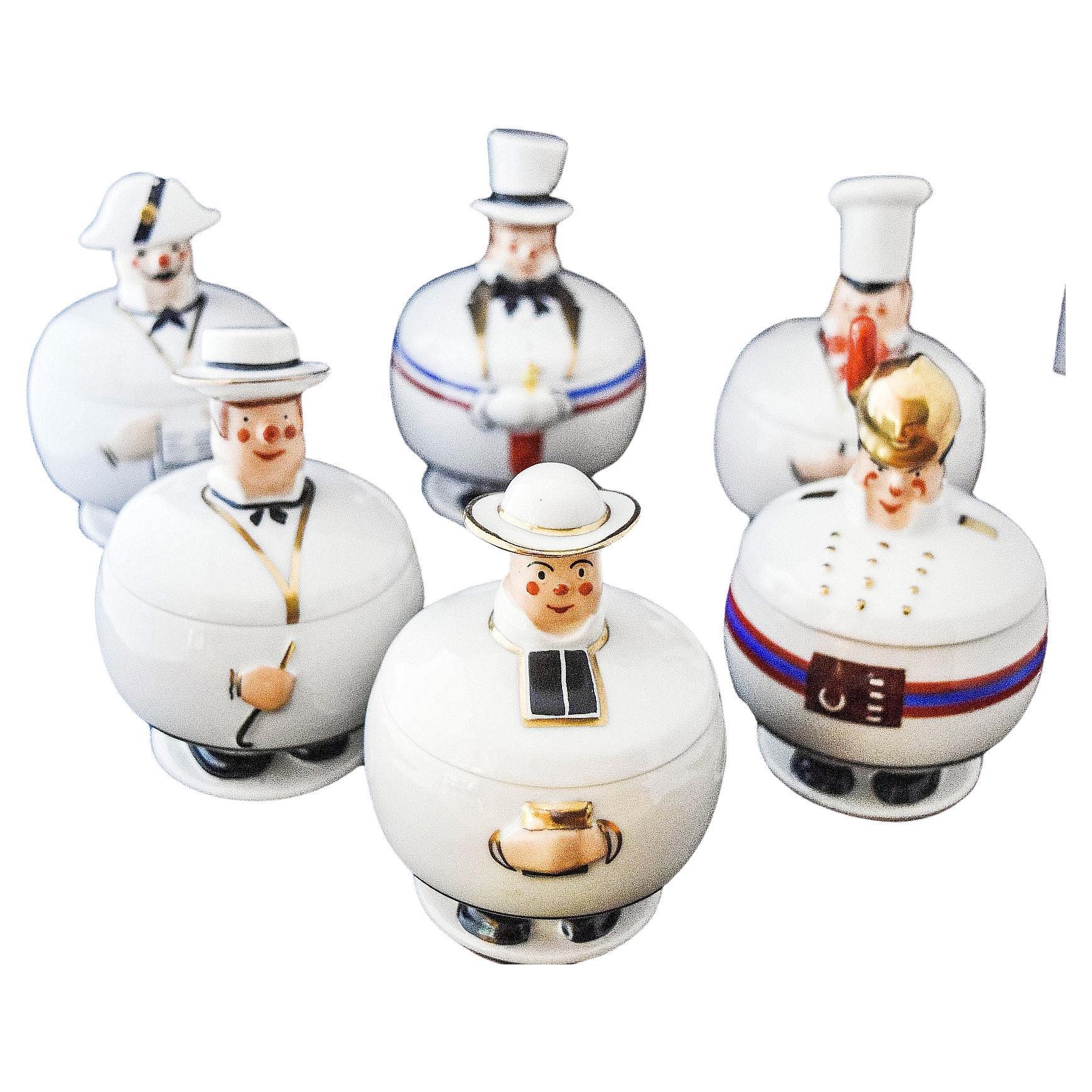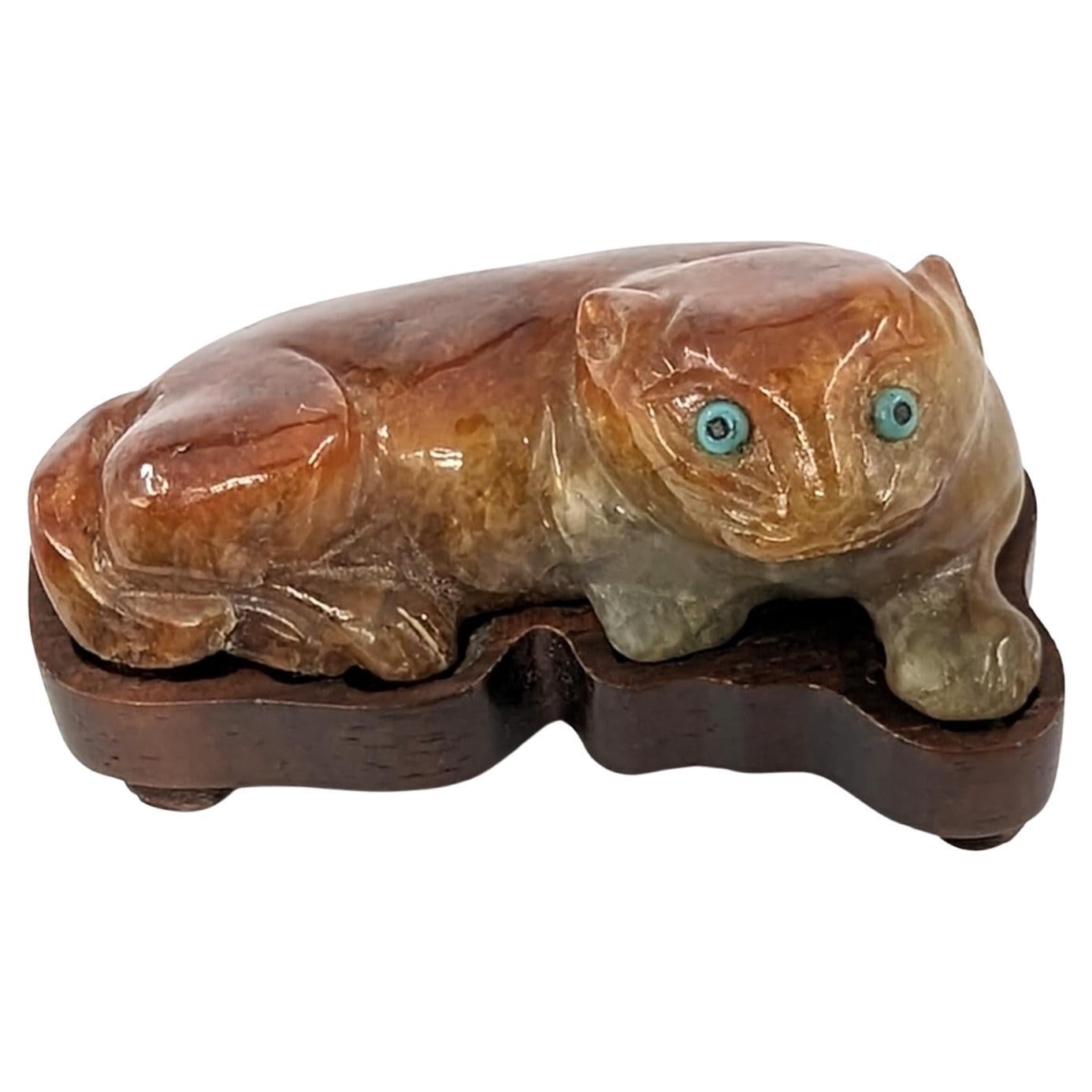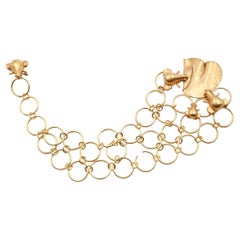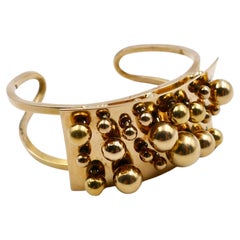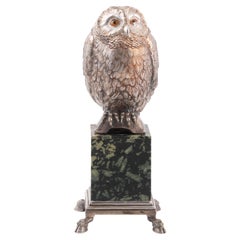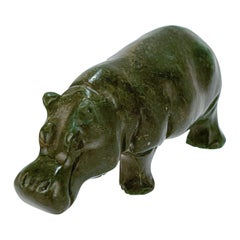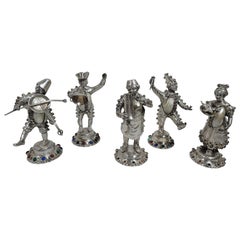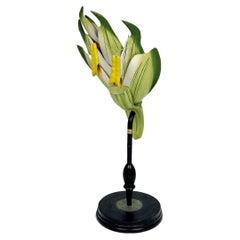
R. Brendel "Triticum Vulgare" Botanical Model Germany XIXe
View Similar Items
Video Loading
Want more images or videos?
Request additional images or videos from the seller
1 of 8
R. Brendel "Triticum Vulgare" Botanical Model Germany XIXe
About the Item
- Creator:R. Brendel
- Dimensions:Height: 17.72 in (450 mm)
- Style:
- Place of Origin:
- Period:
- Date of Manufacture:1900
- Condition:
- Seller Location:Bruxelles, BE
- Reference Number:1stDibs: LU2490219053082
About the Seller
No Reviews Yet
Vetted Seller
These experienced sellers undergo a comprehensive evaluation by our team of in-house experts.
1stDibs seller since 2022
More From This SellerView All
- Line Vautrin gilded bronze brooch "Les Grenouilles"By Line VautrinLocated in Bruxelles, BEVery rare double pin brooch linked with 3 chains by French artist Line Vautrin. Line Vautrin was a French jewelry maker, designer, and decorative artist. Best known for her uncatego...Category
Vintage 1950s French Modern Brooches
MaterialsBronze
- Claude Gilli, Artist Jewellery, Silver PendantLocated in Bruxelles, BELarge silver pendant depicting four pouring paint pots. Created around 1970' ; Marked : Gilli, artist stamp in a losange, French silver stamp Cl...Category
Vintage 1970s French Contemporary Pendant Necklaces
MaterialsSilver
- Pol Bury Yellow gold kinetic bracelet "Spheres" 1985By Pol BuryLocated in Bruxelles, BEA rare Kinetic artist jewel. A 18ct gold open bracelet decorated with mobile spheres designed by famous Belgian artist Pol Bury (1922 - 2005). Edited by ArtCurial Paris in 1985. Art...Category
Vintage 1980s French Modern Modern Bracelets
MaterialsYellow Gold
- Bent Knudsen Silver and Amethyst Cuff Bracelet 1970', Modernist ScandinavianBy Bent KnudsenLocated in Bruxelles, BEA modernist cuff bracelet designed by famous danish silversmiths Anni and Bent Knudsen. Marked: BENT K - sterling - Denmark - 288 Bent Knudsen (1924-1997) was trained as a silversm...Category
Vintage 1970s Danish Modernist Cuff Bracelets
MaterialsAmethyst, Silver
- Line Vautrin Silvered Bronze Necklace "Entrelacs" 'Tracery' 1950'By Line VautrinLocated in Bruxelles, BEBehold a captivating masterpiece designed by the renowned French artist Line Vautrin (1913-1997). This intriguing and beautiful bronze silvered necklace from the 1950s showcases Vaut...Category
Vintage 1950s French Arts and Crafts Link Necklaces
MaterialsSilver, Bronze
- Line Vautrin "Colombe" BroochBy Line VautrinLocated in Bruxelles, BEExquisite gild-bronze brooch designed by Line Vautrin representing a dove executed in an abstract/cubist manner. ca 1950' Line Vautrin (1913-1997) was a French jewelry maker, design...Category
Vintage 1950s French Arts and Crafts Brooches
MaterialsBronze, Gilt Metal
You May Also Like
- Parcel-Gilt Silver Ornament Modelled as an OwlLocated in Firenze, ITA parcel-gilt silver ornament modelled as an owl on marble base. With Italian maker marks circa 1890's With glass eyes and feather-effect texturing, h...Category
Antique 1890s Italian Figurines and Sculptures
MaterialsSilver
- Old Signed Carved Nephrite Jade German / Russian Hippopotamus FigureLocated in Philadelphia, PAA very fine carved Nephrite Jade hippopotamus figurine. Likely the work of the German lapidary carvers in Idar Oberstein (or possibly Russian in origin). The feet of the hippo have numbered inscription or signature. Simply a great carving! Date: 20th Century Overall Condition: It is in overall good, as-pictured, used estate condition. There are a few round concussion marks here and there, loss to one ear, a small fracture in one nostril (likely from the carving), some edge wear, and some very fine & light surface scratches and other signs of expected light wear consistent with age Maker: Possibly from Idar Oberstein (or one of the Russian houses...Category
20th Century Unknown Russian Empire Figurines and Sculptures
MaterialsJade
- Set of 5 Antique German Jeweled Silver and Shell Country Folk FiguresLocated in New York, NYFive German 812 silver figures, ca 1880. This set comprises two musicians, a tankard-bearing tavern keeper, a fowl-serving wench, and a dagger-wielding pierrot let loose among these ...Category
Antique Late 19th Century German Victorian Figurines and Sculptures
MaterialsMulti-gemstone, Silver
- Mellerio Paris, French Gold, Diamonds, Silver, Lapis, and Obsidian Polo PlayerBy Mellerio dits MellerLocated in New York, NYMellerio Paris, A French Gold, Diamonds, Silver-Gilt, Rock Crystal, Enamel, Emerald, Lapis Lazuli, Agate, Emerald, and Obsidian Polo Player, Carved Horse Sculpture, Jeweled Mounted Object. An extremely rare and unique, one of a kind French Carved Horse Sculpture, Jeweled Mounted Object sculpture "CHEVAUX DE LEGENDE", "A Legendary Horse" by Mellerio, Paris, circa 1999. Sitting on black obsidian base, the solid rock-crystal slab is finely applied with a carved obdisian hardstone horse and polo player, mounted in 18k gold, brilliant -cut diamonds, emaralds, enamel, lapis lazuli, and agate, .The obsidian base with a plaque engraved: CHEVAUX DE LEGENDE" / MELLERIO DITS MELLER PARIS / 5003 DIV The piece is in excellent condition and comes with a custom made wood case made for transport. It's very elegant and has French hallmarks throughout. A truly magnificent piece. Measures 12" high x 8" wide x 4" deep Founded in France in 1613 by the descendants of Italian immigrants from the Vigezzo Valley in the north of Italy, Mellerio is one of the oldest jewellery houses in Europe. The family business soon attracted the attention of the Royal Court and Marie Antoinette herself reportedly purchased a precious bracelet featuring 7 cameos surrounded by rubies in 1780. Later on, in the 19th century, Mellerio became the official supplier of the French Royal family and the Court of Netherland. Mellerio creates many jewellery items, all set with rare gems such as peridots, amethysts, aquamarines, citrines and topaz, applying for a patent, the flexible stem, a very supple and light jewellery mechanism. Mellerio remains also well known for their spectacular series of Art Nouveau jewels, created at the beginning of the 20th century, as well as for the creation of trophies rewarding some of the greatest footfall and tennis players of history. In 1993, the jewellery house launched their first watch collection. Today, Mellerio has stores in Paris, Japan and Hong Kong. July 14, 1789: this date is known throughout the world as the beginning of the French Revolution. According to a ledger belonging to House of Mellerio, this was also the day that the jeweler sold a golden key to the Comte de Coutance for 10 livres. This ledger, as well as inventories dating as far back as 1768, are the jeweler’s oldest archives. These archives have continued to grow over the years, as the House, established on rue de la Paix in Paris, still lives on today, still in the hands of the same family from Craveggia, in the North of Italy. The tumultuous history of the Mellerio family in France probably goes as far back as the Italian wars of the Renaissance, but the first official document proving their commercial activity in Paris dates back to 1613. This document is the famous royal warrant awarded by Marie de Medici to a number of Italian families established along the rue des Lombards, including the Mellerios, allowing them to sell “small jewelery items”, therefore granting them a small exception to the traditional monopoly enjoyed by Parisian jewelers. At that time, powerful corporations regulated the operations and customs of Parisian business, but thanks to this exceptional warrant, the Mellerios managed to escape the confines of this framework. Today, this wax-sealed document is kept at the city hall of Craveggia. From 1613 to the Revolution, the Mellerios lived between France and Italy. The corporations tried many times to put an end to their trade privileges, but all in vain, as a dynasty of sovereigns renewed the warrant. Always marrying and often retiring in Craveggia, the Mellerios continued to maintain their jewelry business in Paris. At first, they did this without a shop. Wearing backpacks (wooden boxes divided into small compartments where jewels were kept), they would tour town fairs around Paris and royal castles. This is how Jean-Baptiste Mellerio (1765-1850) is said to have sold a bracelet set with rubies and Antique cameos to Marie-Antoinette, which still exists today. Many elements seem to prove the veracity of this anecdote. The queen was particularly fond of cameos, which cover the entire background of her famous jewelry cabinet, and ruby was her favorite stone after diamond. The famous bracelet, reacquired a few years ago by the House of Mellerio, is indeed an 18th century jewel, set with antique cameos representing the profiles of Roman emperors. Two branches of the family were operating in Paris during this time, under the reign of Louis XVI: that of Jean-François (1746-1828), the paternal ancestor of the current Mellerios, and that of Jean-Baptiste (1765-1850). The French Revolution forced them to return to Italy. However, both Jean-Baptiste and François Mellerio (1772-1843), who was the son of Jean-François, were eventually able to return to Paris after the founding of the Consulate. Jean-Baptiste opened a shop at the Iron Crown of rue Vivienne, and François opened his at the Palais des Tuileries, rue du Coq Saint-Honoré. His well-organized order books give an idea of his high-ranking clientele during the “Old Regime”, among which were the Comte and Comtesse Octave de Segur, the Marquise (later Duchess) de Tourzel, former governess of the royal children, and her daughter, the Comtesse de Bearn, the Craufurds -who organized the flight to Varennes, the Duc and Duchess de Gramont, the Comtesse de Boigne, and Madame de Souza, Talleyrand’s mistress. We also see the names of the imperial family: Empress Josephine, the Queen of Holland, Princess Elisa, Caroline and Pauline. At that time, the House of Mellerio specialized, among other things, in the trade of antique cameos, a newly fashionable genre of jewel that captured the imagination of all the princesses and noble women of the time. The years of the Restauration and July Monarchy were among the most glorious. The Bourbons were back on the throne, and the clientele of the House of Mellerio had regained its former wealth. Mellerio supplied Louis-Philippe, Duke of Orléans, as well as his mother, wife and sister, with sumptuous jewels, including a set of emeralds made piece by piece, while the Duke of Bourbon, last prince of the House of Condé, offered diamonds to his mistress, the scheming Baronne de Feucheres, and Monsieur de LaFayette also bought cameos for one of his granddaughters. For the first time, Mellerio ventured into the world of arts in 1815, when Carlotta Grisi, a famous dancer who created Giselle, as well as an actress named Rachel, bought jewels at the Mellerio store on rue de la Paix. 1848 marked a new turning point. France once again became a Republic. François Mellerio handed the company over to his son, Jean, and the latter decided to travel to Spain to build a new clientele. He later became one of the jewelers of the royal family, and met Eugénie de Montijo, who remained a faithful client when she became empress of the French people. The Imperial years were lavish. During the Second Empire, Paris was a pageant of crinoline dresses designed by Worth, while jewels by Mellerio, Worth’s neighbour on the rue de la Paix, adorned the noble women of the Tuileries court. The Empress bought pearls. Mathilde Bonaparte...Category
20th Century French Art Deco Figurines and Sculptures
MaterialsAgate, Diamond, Emerald, Rock Crystal, Gold, Silver
- Guido Gambone pottery vase ovoid with knopped neck painted with a geometric faceLocated in London, GBGuido Gambone Unusual Vase In amazing condition, fully signed with Donkey marks ovoid shape knobbed neck, painted with a geometric face in aubergine and mushroom on blue ground, P...Category
Mid-20th Century Artist Figurines and Sculptures
- Lenci La Studentessa Limited Re edition of 100 by Este CeramicheBy LenciLocated in London, GBLenci La Studentessa Limited Re edition of 100 Lenci ceramic figure of a young girl student sitting on a book case. An original design by Helen Konig Scavini around 1934 This is ...Category
Early 2000s European Art Deco Figurines and Sculptures
Recently Viewed
View AllMore Ways To Browse
Flower Objet
Jewelry Catalog
Antique Wheat Glasses
Bamboo Beads
Botanical Jewelry
Antique Wood Figurines
Glass Beaded Flowers Italy
Antique Celluloid
Antique Italian Figurines
Antique Jewellery University
Antique Jewelry University
Antique Anatomy Model
Antique Jewelry Berlin
Antique Jewellery Berlin Berlin
Antique Jewellery Berlin
Papier Mache Jewelry
Papier Mache Botanical
Beaded Figurine


